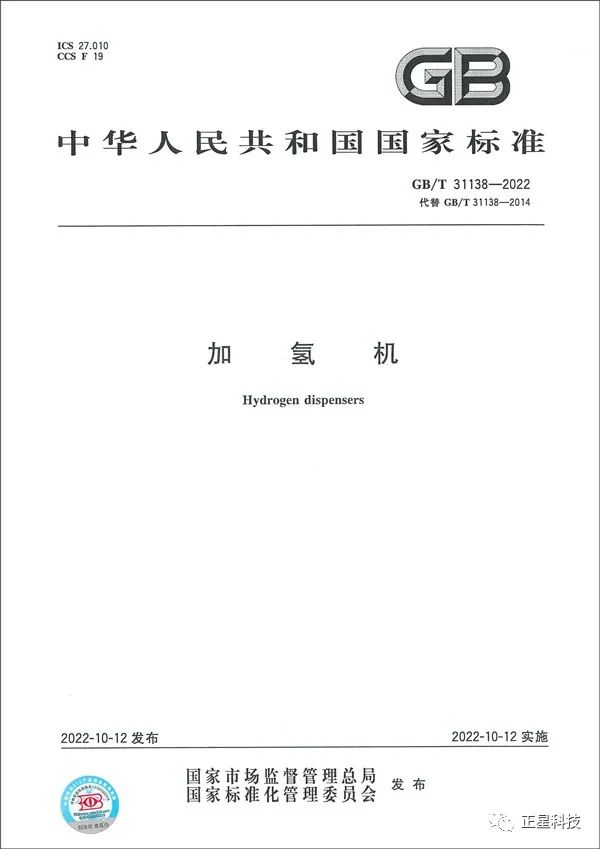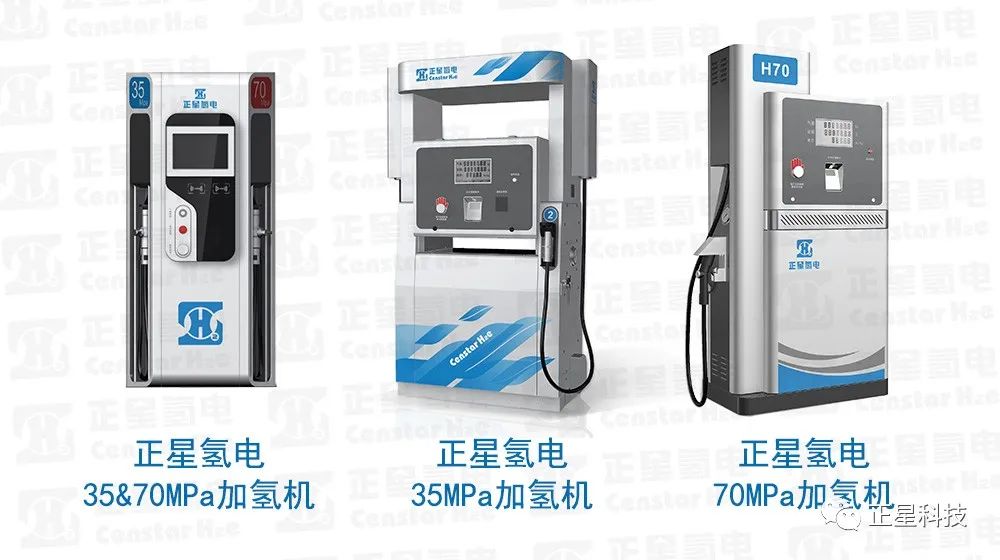Standard release | The new version of the national standard Hydrogen Dispensers, which was drafted by Censtar H2e, has been officially released and implemented
2022-10-31
Recently, the national standard Hydrogen Dispensers (GB/T 31138-2022) has been officially released and implemented, replacing the national standard Compressed Hydrogen Dispenser for Vehicles (GB/T 31138-2014). The standard was proposed by the National Technical Committee of Hydrogen Energy Standardization. By virtue of its outstanding technical R&D strength and industry influence in hydrogen refueling equipment and systems, Censtar H2e participated in the compilation of relevant content of the standard.

The National Standardization Management Committee first issued the national standard Compressed Hydrogen Dispenser for Vehicles (GB/T 31138-2014) in 2014 to provide support for the manufacture, testing and application of hydrogen refueling equipment. In recent years, with the rapid development of China's hydrogen energy industry, there are new requirements for the performance requirements and control methods of hydrogen dispensers. In 2020, the National Standardization Management Committee issued a revision plan for Compressed Hydrogen Dispenser for Vehicles (GB/T 31138-2014). The National Hydrogen Energy Standardization Technical Committee organized relevant units to complete the revision and review of the technical content of the standard by the end of 2021. In order to meet the needs of industrial development and harmonize with GB 50516, GB 50156 and other standards, the standard name is revised to "Hydrogen Dispensers".
Hydrogen Dispensers (GB/T 31138-2022) was issued and implemented on October 12, 2022, which stipulates the technical requirements, test methods, markings, packaging, transportation and storage, installation and maintenance requirements of hydrogen dispensers. It is applicable to hydrogen dispensers with a nominal working pressure not greater than 70MPa for hydrogen facilities of hydrogen vehicles, and hydrogen facilities for hydrogen ships, trams, aircraft, engineering vehicles, power generation devices, etc. can also refer to this document. Compared with the 2014 edition, the new national standard for hydrogen dispensers has mainly revised the following contents:
1. Revised system composition requirements of hydrogen dispensers
The typical system composition and working process of a hydrogen dispenser: hydrogen enters the hydrogen dispenser inlet pipeline from the gas source interface, and passes through the gas filter → intake valve → mass flow meter → flow control device → heat exchanger (optional) → breakaway → hydrogen hose → hydrogen nozzle, before being charged into a hydrogen storage cylinder through the hydrogen port. The control system of the hydrogen dispenser automatically controls the hydrogenation process, and communicates with the station control system of the hydrogen station and the hydrogenation communication interface (optional) in real time.
2. Revised and additional technical requirements for hydrogen dispensers
Gas filter specifications, safety valve setting, hydrogen pre-cooling requirements, function button design, hydrogen dispenser appearance and structure, pressure resistance requirements for hydrogen dispensers, air tightness requirements, power-down protection and redisplay, environmental adaptability, breakaway , filling flow, hydrogen dispenser communication failure, emergency shutdown and other requirements are revised. Metering accuracy and repeatability requirements of hydrogen dispensers are revised.
Function and performance requirements such as pressure sensor, temperature sensor, flow control, pressure relief function, automatic cut-off valve, fatigue life of pipes and valves, filling end status, filling rate, volume test, flow cycle, hydrogen dispenser cleanliness and the safety requirements of the hydrogen dispenser are added.
3. Revised and additional test and inspection requirements for hydrogen dispensers
Requirements of test conditions, basic function inspection, appearance and structure inspection, measurement accuracy test, compressive strength test, air tightness test, breakaway valve test, safety performance test, factory inspection, type test, etc. are revised.
Requirements for power supply adaptability test, pipeline and valve test, filling end state test, hydrogen nozzle test, hydrogen dispenser cleanliness test, etc. are added.

Censtar H2e has always been innovating in products, technologies and services. Over the years, it has successively edited and participated in the compilation of a number of national, local, group standards and enterprise standards in the field of hydrogen energy. As a leading enterprise in domestic hydrogen station solutions, Censtar H2e will continue to focus on the R&D, innovation and standardization of core equipment and systems for hydrogen stations in the future. We will join hands with other excellent companies in the industry to help establish a standardized system for the domestic hydrogen energy industry and promote sustained, healthy, and rapid development of the industry.

